What are hobo spiders?
The common name for the hobo spider comes from its presumed method of expanding its distribution by hitching rides with humans along major highways in the Pacific Northwest. In fact, the hobo spider was introduced from Europe in the 1930s and has become established in at least 6 states since, displacing many native spider species as it spreads.
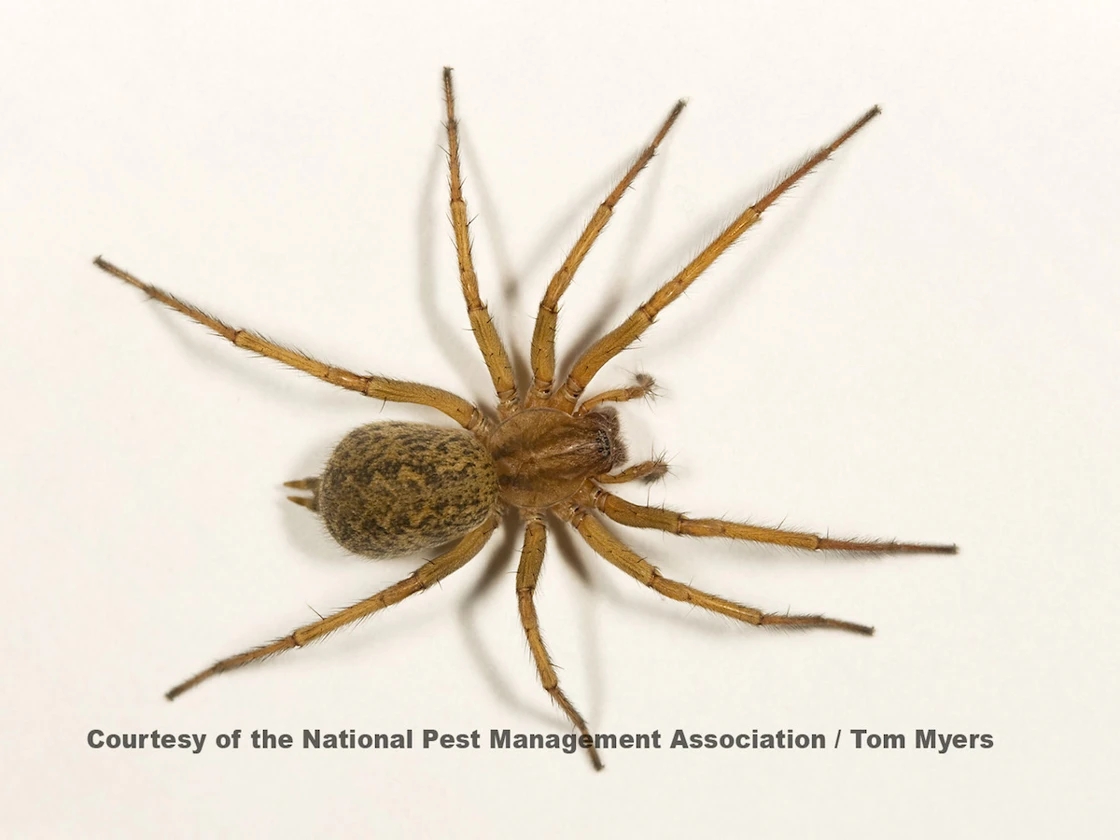
Color: Light to medium brown with dark stripe down center to either side of lighter midline stripes; legs solid light brown with no bands
Size: 1 – 1 and 3/4” (40-50 mm) in diameter, including legs. Body sizes range from 5/16” to 9/16” with females slightly larger than males.
Legs: 8
Antennae: No
Shape: Oblong abdomen with longer posterior spinnerets visible from above
Region: Common in the northwestern U.S.; appears to be expanding its range
Is a hobo spider poisonous?
Hobo spider venom is not toxic to humans, but some people may experience a skin reaction. Some other spider bites may require medical attention.
Hobo Spider Habitats
Hobo spiders may be found in almost any habitat containing holes, cracks or crevices which can support tunnel formation. Since they are poor climbers, they are rarely found above ground level. They frequent dark, moist areas and are most often found in basements, window wells and crawl spaces.
How to Prevent Hobo Spiders
To avoid hobo spiders, seal cracks on the outside of the home, and screen all doors and windows. Reduce clutter in basements and garages to eliminate hiding spots and keep these areas dry. Avoid storing clothing or shoes on the floor and use caution when moving items that have been stored for a long period of time. To get rid of hobo spiders, contact a pest professional.
hobo spider bite symptoms
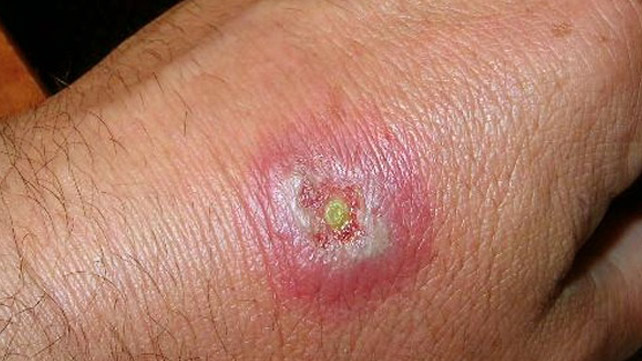
Hobo Spider Threats
The hobo spider will bite in defense; however there is debate around the effects of hobo spider bites as these spiders are frequently confused with other species. In fact, misinformation on hobo spiders is so prevalent that it was previously thought that they are capable of producing a necrotic lesion similar to that caused by brown recluse spiders. However, much of the evidence in such cases has been circumstantial. The prevailing thought is that hobo spider bites causes only mild pain and redness.
If you notice hobo spiders, contact a professional immediately to discuss how to get rid of the infestation through a proper course of pest control.
A hobo spider is a common type of spider found in the Pacific Northwestern United States. This area includes the states of Washington, Oregon, Idaho, and Utah.
The hobo spider got its name from the fact that it’s often found along railroad tracks. But it’s also found in many other places close to the ground with holes and cracks, such as rock retaining walls, in construction supplies, beneath debris, and around building foundations.
Sometimes people refer to the hobo spider as the “aggressive house spider,” but this name is misleading. The spider does not naturally live indoors. And it’s not aggressive unless catching its prey or when trapped against a person’s skin. These are the only cases in which it may bite. It’s important to remember that spiders would rather run away than bite.
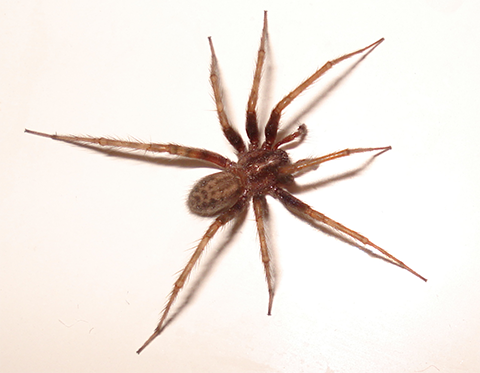
What does a hobo spider look like?
It can be difficult to identify a hobo spider simply by the way it looks. Long legs, a brown body, and a grayish abdomen with yellowish markings are typical of many types of spiders.
The body length of a hobo spider is about 1/4 to 1/2 inch long with a leg span of about 1-2 inches. There are over 200 spider species in the region that look similar.
The hobo spider belongs to the funnel-web spider family. These spiders make funnel- or tube-shaped places out of their silk to hide in. They can run quickly, up to 3 feet per second, when moving from place to place. They aren’t very good at climbing.
Most spiders in this funnel-web spider family are harmless or only cause minor bite reactions. While the hobo spider bite has often been cited in the past as dangerous, new evidence suggests it’s not as harmful as once thought.
What are the symptoms of a hobo spider bite?
It’s suspected that most hobo spider bites occur from July through September. This is when male spiders are searching for females to mate with.
You may be bitten by a hobo spider and not even realize it. Their bite is almost painless, and it may feel like nothing more than a pinprick.
One 2014 study in Oregon was able to verify a hobo spider bite. The individual reported pain, redness, and leg twitching that lasted 12 hours.
However, it’s no longer believed that hobo spider bites cause tissue damage or skin death (necrosis). Unlike other spiders that have been shown to cause this condition, hobo spider venom is not considered toxic to humans according to the Centers for Disease Control and PreventionTrusted Source.
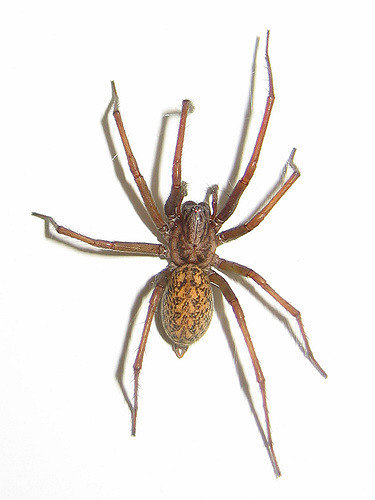
This is supported by studies where hobo spider venom was injected into animals and failed to show any skin reactions.
Spiders in the United States that have toxic venom dangerous to humans include the black widow spider and the brown recluse spider.
How do you treat a spider bite?
Any skin lesion that is red, painful, blistering, or turning black requires immediate medical attention. Spider bites are often blamed for many skin conditions. However, studies show that often, the skin infection methicillin resistant Staphylococcus aureus (MRSA) is the actual causeTrusted Source rather than a spider bite.
Learn how to identify and treat spider bites »
If you think you’ve been bitten by a spider, there are some things you should do right away. This includesTrusted Source:
clean the bite area with mild soap and water
apply a cool compress to the bite site to reduce pain and swelling
elevate your arm or leg if that’s where the bite occurred
After administering first aid, you should see a doctor right away. A tetanus booster shot may be required. If you’re able, bring in the spider to aid in diagnosis and treatment.
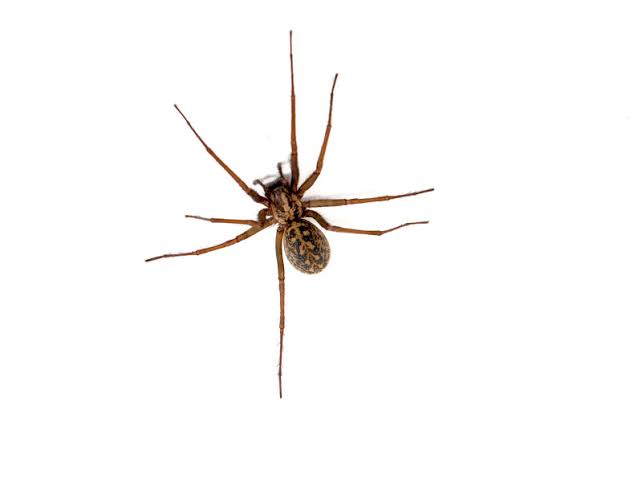
What is the outlook for a hobo spider bite?
The outlook is good for hobo spider bites. Current studies support that hobo spider venom isn’t considered dangerous to humans. Skin reactions are limited and short-lived. If you’re concerned about any skin reaction, see a doctor for a proper diagnosis. What looks like a spider bite may actually be another skin condition.
How do you prevent a hobo spider bite?
Spiders, including the hobo spider, only bite to defend themselves when trapped between your skin and another object. They do not attack humans on purpose.
To prevent spider bites, you can:
Limit rubbish and wood piles around your home, as these provide good places for spiders to hide.
Learn more about what poisonous spiders look like and where they like to hide. Avoid those spiders if you see them, and be careful in those places.
Seal tools that are stored in sheds and garages in plastic bags to avoid spider encounters.
Wear a long-sleeved shirt, hat, long pants tucked into socks, gloves, and boots when working with stored boxes and firewood. Also do this when cleaning out attics, basements, crawl spaces, garages, and sheds.
Look inside of and shake out gardening gloves, boots, shoes, and clothing items that haven’t been used for a long period of time.
Trap the spider under a jar, with a piece of paper slipped under the jar so that the spider can be removed safely from your home. This is also a way to catch a spider for identification.
Make sure the screens on your windows and doors fit snugly, and be sure to seal up any cracks spiders can enter.
Keep beds away from the walls and make sure only beds’ legs touch the floor. Keep the space beneath beds open and don’t allow bedding to touch the floor.
Vacuum frequently to help prevent spiders from living in your home.
Catch spiders without using chemicals by placing sticky traps along doorways.
